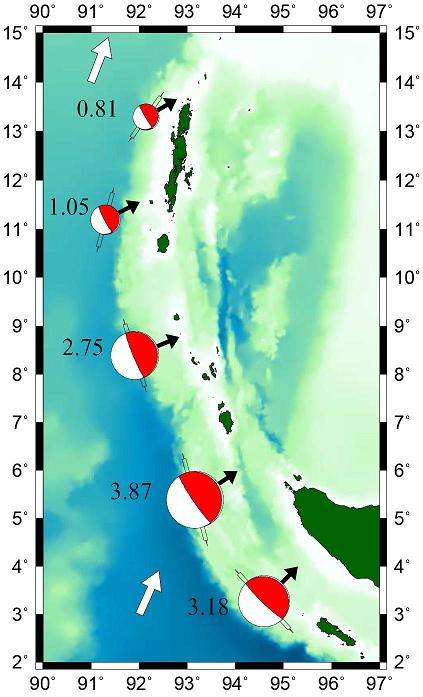Multiple CMT Analysis

When observed from far away, most earthquakes can be very well approximated
as a point source with a certain mechanism. This has led to the traditional
centroid moment tensor (CMT) approach to constraining earthquake source properties.
However, some earthquakes are observably complex, leading a number of researchers
to attempt 'finite-fault' inversions for these earthquakes. Unfortunately, there
is typically insufficient data to constrain the many parameters assumed in most
finite-fault inversions, leading to ambiguities in their interpretation.
We have taken a complementary approach, where we assume a small number of CMTs to fit
the seismic data. Using multiple point sources in the CMT analysis, we can fit the data
substantially better than the single CMT solution and at the same time constrain
well all of the parameters of the inversion, unlike in most finite-fault inversions.
For example, in our multiple-CMT analysis, all of the mechanism parameters (like strike
and dip) are constrained independently, whereas most finite-fault inversions need to
assume a fault plane.
We have applied our multiple-CMT methodology to a few different large earthquakes, including
the great 2004 Sumatra-Andaman earthquake (Tsai et al. 2005) and the 2012 Sumatra earthquake
(Duputel et al. 2012; Meng et al. 2012). Our final model for the 2004 Sumatra-Andaman earthquake
has five point sources, and the locations and sizes of these sources is depicted at right. See
publications section for details.
